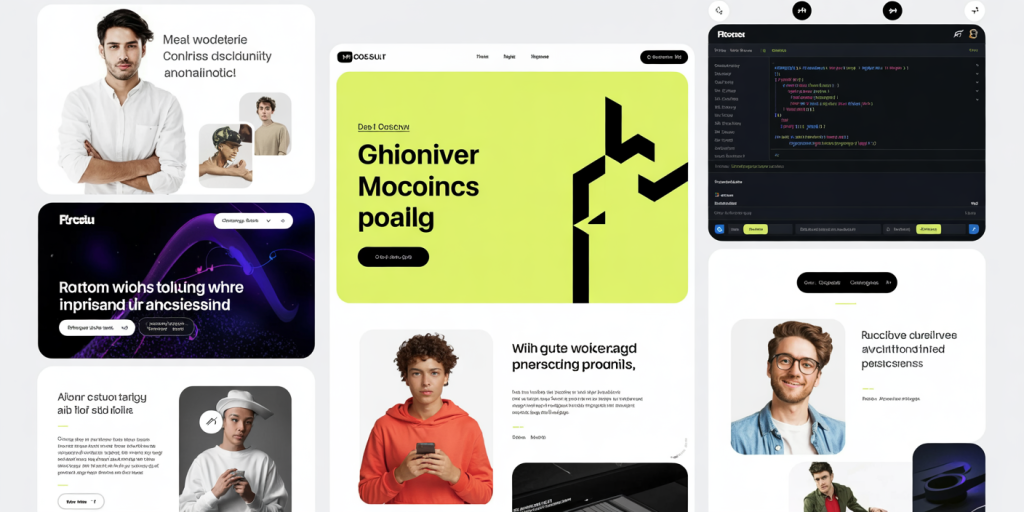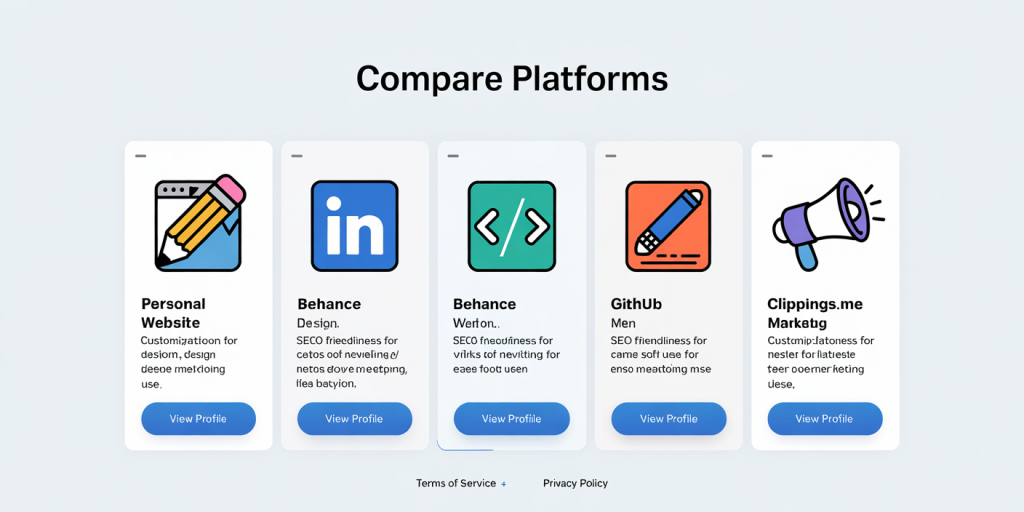How to Create a Digital Portfolio That Impresses Recruiters
In today’s competitive job market, standing out is essential. With recruiters often sifting through hundreds of applications, a well-crafted digital portfolio can be the key to capturing their attention. Unlike traditional resumes, digital portfolios showcase your skills, creativity, and accomplishments dynamically, offering recruiters a richer understanding of your capabilities. According to a 2023 report by TalentLMS, 67% of hiring managers prefer candidates who present a digital portfolio, emphasizing its rising importance in recruitment processes across industries.
Creating an impressive digital portfolio, however, isn’t just about compiling past work. It requires strategic organization, visual appeal, and relevant content tailored to the roles you are seeking. This article provides practical guidance and proven strategies to help you build a digital portfolio that not only highlights your experience but also leaves a memorable impression on recruiters.
Understanding the Purpose of a Digital Portfolio
A digital portfolio serves as an online showcase of your professional identity, skills, and accomplishments. Unlike a traditional resume that offers a static snapshot, a digital portfolio allows you to present a narrative with depth and evidence. It can include project samples, case studies, videos, testimonials, and more, offering a multi-dimensional view of what you bring to the table.
For example, a graphic designer might include a variety of high-resolution visuals categorized by project type, while a software developer may share GitHub repositories and live demos of their code. According to LinkedIn data from 2022, candidates who share portfolios receive up to 40% more messages from recruiters, illustrating the portfolio’s effectiveness in enhancing candidate visibility.
Beyond showcasing skills, digital portfolios help candidates demonstrate their technical proficiency and digital literacy—attributes highly valued in the modern workplace. In hiring sectors such as marketing, design, IT, and media, a digital portfolio often functions as a prerequisite or key differentiator.
Choosing the Right Platform for Your Portfolio
Selecting the right platform is one of the foundational steps in building a compelling digital portfolio. The choice depends on factors like industry norms, your technical skills, and the level of customization you require. Common platforms include personal websites, LinkedIn, Behance, GitHub, and specialized portfolio hosts like Dribbble for designers or Clippings.me for writers.

When comparing platforms, it’s important to consider user-friendliness, customization options, SEO capabilities, loading speeds, and mobile responsiveness. Here’s a comparative overview:
| Platform | Best For | Customization | SEO Friendly | Ease of Use | Cost |
|---|---|---|---|---|---|
| Personal Website | All industries | High | High | Medium-High | Variable |
| General professionals | Low | High | High | Free | |
| Behance | Designers, creatives | Medium | Medium | High | Free |
| GitHub | Developers | Medium | Medium | Medium | Free |
| Clippings.me | Writers, journalists | Low | Medium | High | Freemium |
For instance, Jenna, a UI/UX designer, created her digital portfolio on Behance, where she organized her projects interactively. This allowed recruiters to view her design process through annotated images and prototypes, resulting in job offers within weeks of launch. Meanwhile, David, a data analyst, opted for a custom personal website integrated with his GitHub projects, giving recruiters both polished presentations and raw data scripts to evaluate his skills thoroughly.

Crafting Compelling Content and Structure
Content quality is the heart of any impressive portfolio. Recruiters look for clarity, relevance, and evidence of impact. Start by defining your target audience—what roles are you applying for, and what competencies are most critical in those positions? Structure your portfolio to answer these questions efficiently.
Your digital portfolio should contain the following sections: About Me: Introduce yourself with a professional photo and a brief summary highlighting your expertise and career goals. Work Samples: Showcase 5 to 10 of your best projects with descriptions explaining your role, challenges faced, and outcomes. Skills: Highlight both hard skills (e.g., software proficiency, languages) and soft skills (e.g., communication, leadership). Testimonials: Add quotes or recommendations from previous employers, colleagues, or clients. Contact Information: Provide clear, easy-to-find contact details or inquiry forms.
Practical Example: Sarah, a content marketing specialist, included a case study in her portfolio that detailed how she increased organic traffic for a client’s website by 120% in six months. She shared screenshots of analytics, content calendars, and strategy documents. This level of transparency built trust with recruiters and demonstrated her ability to generate measurable results.
Use strong calls to action, compelling headlines, and concise language throughout your portfolio. Avoid clutter; minimalism paired with functionality helps recruiters navigate your work quickly—an essential consideration given that recruiters spend an average of only 6 seconds scanning a resume.
Enhancing Visual Appeal and User Experience
Aesthetics and usability go hand in hand when it comes to digital portfolios. Visual appeal draws recruiters in, but user experience (UX) ensures they stay engaged. Consistent branding—colors, fonts, and layout that reflect your professional identity—creates a cohesive look that elevates your portfolio’s perceived quality.
Adopt a clean, responsive design to ensure your portfolio looks good on any device. Studies from Adobe reveal that 38% of users stop engaging with a website if the content or layout is unattractive. Loading speed also matters; delays beyond three seconds can result in increased bounce rates, leading recruiters to move on.
Consider adding interactive elements such as sliders to showcase projects, video introductions to add a personal touch, and navigation menus that allow easy access to various sections. Tools like WordPress, Squarespace, or Wix offer templates optimized for portfolios, balancing customization and ease of use.
For example, Anthony, a multimedia artist, embedded time-lapse videos of his creative process, turning what could be a static gallery into a dynamic storytelling experience. This innovative approach resulted in high engagement during interviews, as his portfolio exemplified not just end products but the artistry behind each piece.
Leveraging SEO and Analytics to Boost Visibility
Having a beautifully designed and content-rich portfolio is insufficient if it remains hidden from recruiters. Search Engine Optimization (SEO) for personal portfolios enhances visibility in online searches. By strategically incorporating keywords related to your profession, skills, and industry, recruiters are more likely to find your portfolio organically.
Focus on: Using relevant keywords in headings, descriptions, and metadata. Optimizing images with alt text. Creating descriptive URLs. Including a regularly updated blog or news section to increase site ranking.
For example, if you are a “freelance web developer,” embedding this phrase naturally throughout your portfolio can help recruiters searching for this term locate you more easily.
Analytics tools like Google Analytics or built-in platform reports allow you to monitor visitor behavior, popular pages, and traffic sources. This data helps refine your portfolio periodically based on recruiter interaction patterns.
Data Snapshot: HubSpot reports that websites appearing on the first page of Google search receive 92% of search traffic, underscoring the importance of SEO. Additionally, portfolios with active analytics integration allow candidates like Karen, a digital marketer, to tailor her content and contact strategies based on visitor engagement.
Preparing Your Portfolio for Future Trends
The digital job market continues to evolve rapidly, influencing how portfolios are created and perceived. Emerging technologies such as AI-driven personalization, augmented reality (AR), and virtual reality (VR) are beginning to reshape portfolio experiences.

AI tools can optimize content creation by suggesting improvements, selecting keywords, or even automatically generating portfolio content based on your past achievements. AR and VR provide immersive presentation opportunities, allowing users to interact with projects in 3D spaces—a potential game-changer for industries like architecture and product design.
Moreover, the rise of video resumes and personal branding through social media integration will further complement traditional portfolios. For instance, embedding short video testimonials or walkthroughs within your portfolio can create a more engaging narrative.
Staying ahead means not only updating portfolio content regularly but also embracing new media formats and technologies aligned with your industry. Platforms such as Canva and Adobe Creative Cloud are integrating these advanced features, making experimentation accessible.
Forward-thinking professionals will blend storytelling with innovation to create portfolios that are both authentic and technologically sophisticated, ensuring they remain relevant in a future job market increasingly shaped by digital immersion.
—
Creating a digital portfolio that impresses recruiters requires thoughtful curation, strategic presentation, and ongoing optimization. By understanding the purpose, choosing the right platform, crafting compelling content, enhancing usability, leveraging SEO, and preparing for future trends, you position yourself as a standout candidate. The effort invested today translates into amplified opportunities and accelerated career growth, proving that your digital portfolio is more than a collection of work—it’s your professional legacy in the digital age.
